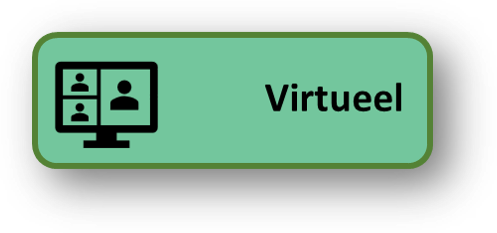Aangeboden leervormen


Microsoft Security Operations Analyst - SC-200
Learn how to investigate, respond to, and hunt for threats using Microsoft Azure Sentinel, Azure Defender, and Microsoft 365 Defender. In this course you will learn how to mitigate cyberthreats using these technologies. Specifically, you will configure and use Azure Sentinel as well as utilize Kusto Query Language (KQL) to perform detection, analysis, and reporting. The course was designed for people who work in a Security Operations job role and helps learners prepare for the exam SC-200: Microsoft Security Operations Analyst.

Voor wie
The Microsoft Security Operations Analyst collaborates with organizational stakeholders to secure information technology systems for the organization. Their goal is to reduce organizational risk by rapidly remediating active attacks in the environment, advising on improvements to threat protection practices, and referring violations of organizational policies to appropriate stakeholders. Responsibilities include threat management, monitoring, and response by using a variety of security solutions across their environment. The role primarily investigates, responds to, and hunts for threats using Microsoft Azure Sentinel, Azure Defender, Microsoft 365 Defender, and third-party security products. Since the Security Operations Analyst consumes the operational output of these tools, they are also a critical stakeholder in the configuration and deployment of these technologies.
Programma
Module 1: Mitigate threats using Microsoft Defender for Endpoint
Implement the Microsoft Defender for Endpoint platform to detect, investigate, and respond to advanced threats. Learn how Microsoft Defender for Endpoint can help your organization stay secure. Learn how to deploy the Microsoft Defender for Endpoint environment, including onboarding devices and configuring security. Learn how to investigate incidents and alerts using Microsoft Defender for Endpoints. Perform advanced hunting and consult with threat experts. You will also learn how to configure automation in Microsoft Defender for Endpoint by managing environmental settings.. Lastly, you will learn about your environment's weaknesses by using Threat and Vulnerability Management in Microsoft Defender for Endpoint.
Lessons
Protect against threats with Microsoft Defender for Endpoint
Deploy the Microsoft Defender for Endpoint environment
Implement Windows 10 security enhancements with Microsoft Defender for Endpoint
Manage alerts and incidents in Microsoft Defender for Endpoint
Perform device investigations in Microsoft Defender for Endpoint
Perform actions on a device using Microsoft Defender for Endpoint
Perform evidence and entities investigations using Microsoft Defender for Endpoint
Configure and manage automation using Microsoft Defender for Endpoint
Configure for alerts and detections in Microsoft Defender for Endpoint
Utilize Threat and Vulnerability Management in Microsoft Defender for Endpoint
Lab : Mitigate threats using Microsoft Defender for Endpoint
Deploy Microsoft Defender for Endpoint
Mitigate Attacks using Defender for Endpoint
After completing this module, students will be able to:
Define the capabilities of Microsoft Defender for Endpoint
Configure Microsoft Defender for Endpoint environment settings
Configure Attack Surface Reduction rules on Windows 10 devices
Investigate alerts in Microsoft Defender for Endpoint
Describe device forensics information collected by Microsoft Defender for Endpoint
Conduct forensics data collection using Microsoft Defender for Endpoint
Investigate user accounts in Microsoft Defender for Endpoint
Manage automation settings in Microsoft Defender for Endpoint
Manage indicators in Microsoft Defender for Endpoint
Describe Threat and Vulnerability Management in Microsoft Defender for Endpoint
Module 2: Mitigate threats using Microsoft 365 Defender
Analyze threat data across domains and rapidly remediate threats with built-in orchestration and automation in Microsoft 365 Defender. Learn about cybersecurity threats and how the new threat protection tools from Microsoft protect your organization’s users, devices, and data. Use the advanced detection and remediation of identity-based threats to protect your Azure Active Directory identities and applications from compromise.
Lessons
Introduction to threat protection with Microsoft 365
Mitigate incidents using Microsoft 365 Defender
Protect your identities with Azure AD Identity Protection
Remediate risks with Microsoft Defender for Office 365
Safeguard your environment with Microsoft Defender for Identity
Secure your cloud apps and services with Microsoft Cloud App Security
Respond to data loss prevention alerts using Microsoft 365
Manage insider risk in Microsoft 365
Lab : Mitigate threats using Microsoft 365 Defender
Mitigate Attacks with Microsoft 365 Defender
After completing this module, students will be able to:
Explain how the threat landscape is evolving.
Manage incidents in Microsoft 365 Defender
Conduct advanced hunting in Microsoft 365 Defender
Describe the investigation and remediation features of Azure Active Directory Identity Protection.
Define the capabilities of Microsoft Defender for Endpoint.
Explain how Microsoft Defender for Endpoint can remediate risks in your environment.
Define the Cloud App Security framework
Explain how Cloud Discovery helps you see what's going on in your organization
Module 3: Mitigate threats using Azure Defender
Use Azure Defender integrated with Azure Security Center, for Azure, hybrid cloud, and on-premises workload protection and security. Learn the purpose of Azure Defender, Azure Defender's relationship to Azure Security Center, and how to enable Azure Defender. You will also learn about the protections and detections provided by Azure Defender for each cloud workload. Learn how you can add Azure Defender capabilities to your hybrid environment.
Lessons
Plan for cloud workload protections using Azure Defender
Explain cloud workload protections in Azure Defender
Connect Azure assets to Azure Defender
Connect non-Azure resources to Azure Defender
Remediate security alerts using Azure Defender
Lab : Mitigate threats using Azure Defender
Deploy Azure Defender
Mitigate Attacks with Azure Defender
After completing this module, students will be able to:
Describe Azure Defender features
Explain Azure Security Center features
Explain which workloads are protected by Azure Defender
Explain how Azure Defender protections function
Configure auto-provisioning in Azure Defender
Describe manual provisioning in Azure Defender
Connect non-Azure machines to Azure Defender
Describe alerts in Azure Defender
Remediate alerts in Azure Defender
Automate responses in Azure Defender
Module 4: Create queries for Azure Sentinel using Kusto Query Language (KQL)
Write Kusto Query Language (KQL) statements to query log data to perform detections, analysis, and reporting in Azure Sentinel. This module will focus on the most used operators. The example KQL statements will showcase security related table queries. KQL is the query language used to perform analysis on data to create analytics, workbooks, and perform hunting in Azure Sentinel. Learn how basic KQL statement structure provides the foundation to build more complex statements. Learn how to summarize and visualize data with a KQL statement provides the foundation to build detections in Azure Sentinel. Learn how to use the Kusto Query Language (KQL) to manipulate string data ingested from log sources.
Lessons
Construct KQL statements for Azure Sentinel
Analyze query results using KQL
Build multi-table statements using KQL
Work with data in Azure Sentinel using Kusto Query Language
Lab : Create queries for Azure Sentinel using Kusto Query Language (KQL)
Construct Basic KQL Statements
Analyze query results using KQL
Build multi-table statements using KQL
Work with string data using KQL statements
After completing this module, students will be able to:
Construct KQL statements
Search log files for security events using KQL
Filter searches based on event time, severity, domain, and other relevant data using KQL
Summarize data using KQL statements
Render visualizations using KQL statements
Extract data from unstructured string fields using KQL
Extract data from structured string data using KQL
Create Functions using KQL
Module 5: Configure your Azure Sentinel environment
Get started with Azure Sentinel by properly configuring the Azure Sentinel workspace. Traditional security information and event management (SIEM) systems typically take a long time to set up and configure. They're also not necessarily designed with cloud workloads in mind. Azure Sentinel enables you to start getting valuable security insights from your cloud and on-premises data quickly. This module helps you get started. Learn about the architecture of Azure Sentinel workspaces to ensure you configure your system to meet your organization's security operations requirements. As a Security Operations Analyst, you must understand the tables, fields, and data ingested in your workspace. Learn how to query the most used data tables in Azure Sentinel.
Lessons
Introduction to Azure Sentinel
Create and manage Azure Sentinel workspaces
Query logs in Azure Sentinel
Use watchlists in Azure Sentinel
Utilize threat intelligence in Azure Sentinel
Lab : Configure your Azure Sentinel environment
Create an Azure Sentinel Workspace
Create a Watchlist
Create a Threat Indicator
After completing this module, students will be able to:
Identify the various components and functionality of Azure Sentinel.
Identify use cases where Azure Sentinel would be a good solution.
Describe Azure Sentinel workspace architecture
Install Azure Sentinel workspace
Manage an Azure Sentinel workspace
Create a watchlist in Azure Sentinel
Use KQL to access the watchlist in Azure Sentinel
Manage threat indicators in Azure Sentinel
Use KQL to access threat indicators in Azure Sentinel
Module 6: Connect logs to Azure Sentinel
Connect data at cloud scale across all users, devices, applications, and infrastructure, both on-premises and in multiple clouds to Azure Sentinel. The primary approach to connect log data is using the Azure Sentinel provided data connectors. This module provides an overview of the available data connectors. You will get to learn about the configuration options and data provided by Azure Sentinel connectors for Microsoft 365 Defender.
Lessons
Connect data to Azure Sentinel using data connectors
Connect Microsoft services to Azure Sentinel
Connect Microsoft 365 Defender to Azure Sentinel
Connect Windows hosts to Azure Sentinel
Connect Common Event Format logs to Azure Sentinel
Connect syslog data sources to Azure Sentinel
Connect threat indicators to Azure Sentinel
Lab : Connect logs to Azure Sentinel
Connect Microsoft services to Azure Sentinel
Connect Windows hosts to Azure Sentinel
Connect Linux hosts to Azure Sentinel
Connect Threat intelligence to Azure Sentinel
After completing this module, students will be able to:
Explain the use of data connectors in Azure Sentinel
Explain the Common Event Format and Syslog connector differences in Azure Sentinel
Connect Microsoft service connectors
Explain how connectors auto-create incidents in Azure Sentinel
Activate the Microsoft 365 Defender connector in Azure Sentinel
Connect Azure Windows Virtual Machines to Azure Sentinel
Connect non-Azure Windows hosts to Azure Sentinel
Configure Log Analytics agent to collect Sysmon events
Explain the Common Event Format connector deployment options in Azure Sentinel
Configure the TAXII connector in Azure Sentinel
View threat indicators in Azure Sentinel
Module 7: Create detections and perform investigations using Azure Sentinel
Detect previously uncovered threats and rapidly remediate threats with built-in orchestration and automation in Azure Sentinel. You will learn how to create Azure Sentinel playbooks to respond to security threats. You'll investigate Azure Sentinel incident management, learn about Azure Sentinel events and entities, and discover ways to resolve incidents. You will also learn how to query, visualize, and monitor data in Azure Sentinel.
Lessons
Threat detection with Azure Sentinel analytics
Threat response with Azure Sentinel playbooks
Security incident management in Azure Sentinel
Use entity behavior analytics in Azure Sentinel
Query, visualize, and monitor data in Azure Sentinel
Lab : Create detections and perform investigations using Azure Sentinel
Create Analytical Rules
Model Attacks to Define Rule Logic
Mitigate Attacks using Azure Sentinel
Create Workbooks in Azure Sentinel
After completing this module, students will be able to:
Explain the importance of Azure Sentinel Analytics.
Create rules from templates.
Manage rules with modifications.
Explain Azure Sentinel SOAR capabilities.
Create a playbook to automate an incident response.
Investigate and manage incident resolution.
Explain User and Entity Behavior Analytics in Azure Sentinel
Explore entities in Azure Sentinel
Visualize security data using Azure Sentinel Workbooks.
Module 8: Perform threat hunting in Azure Sentinel
In this module, you'll learn to proactively identify threat behaviors by using Azure Sentinel queries. You'll also learn to use bookmarks and livestream to hunt threats. You will also learn how to use notebooks in Azure Sentinel for advanced hunting.
Lessons
Threat hunting with Azure Sentinel
Hunt for threats using notebooks in Azure Sentinel
Lab : Threat hunting in Azure Sentinel
Threat Hunting in Azure Sentinel
Threat Hunting using Notebooks
After completing this module, students will be able to:
Describe threat hunting concepts for use with Azure Sentinel
Define a threat hunting hypothesis for use in Azure Sentinel
Use queries to hunt for threats.
Observe threats over time with livestream.
Explore API libraries for advanced threat hunting in Azure Sentinel
Create and use notebooks in Azure Sentinel
Voorkennis
• Basic understanding of Microsoft 365
• Fundamental understanding of Microsoft security, compliance, and identity products
• Intermediate understanding of Windows 10
• Familiarity with Azure services, specifically Azure SQL Database and Azure Storage
• Familiarity with Azure virtual machines and virtual networking
• Basic understanding of scripting concepts.
Examen
Examen SC-200
Direct naar examen: SC-200
Duur training
Klassikaal: 4 dagen


 De SPIN selling methodiek
De SPIN selling methodiek 




